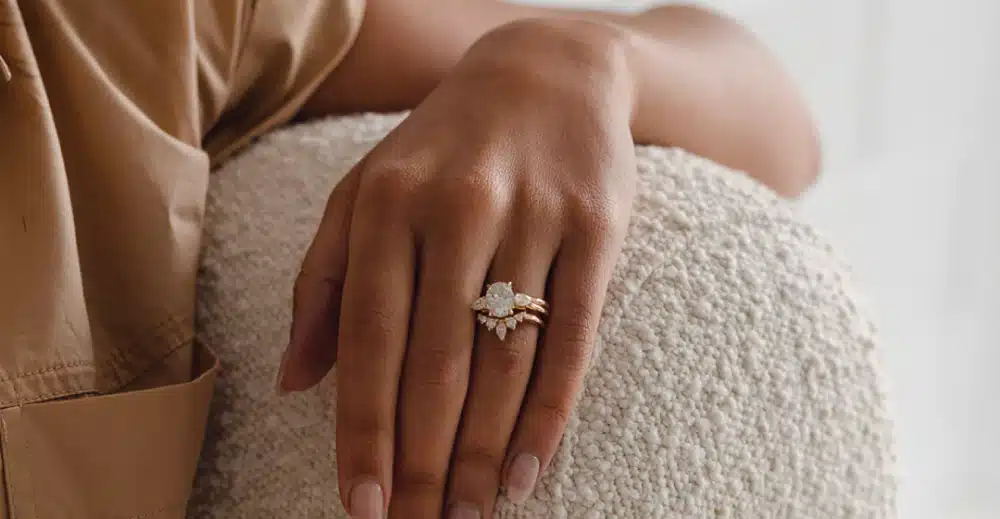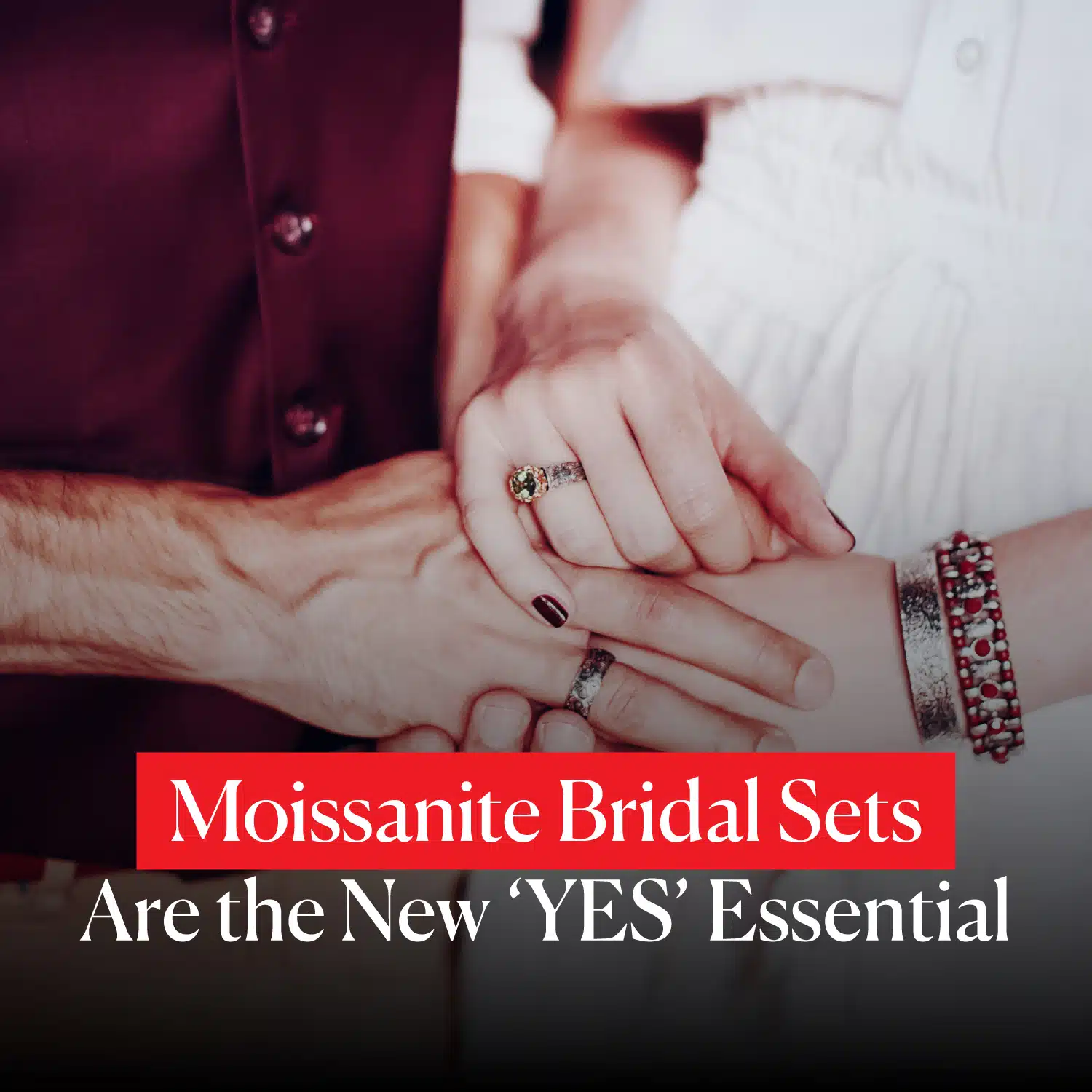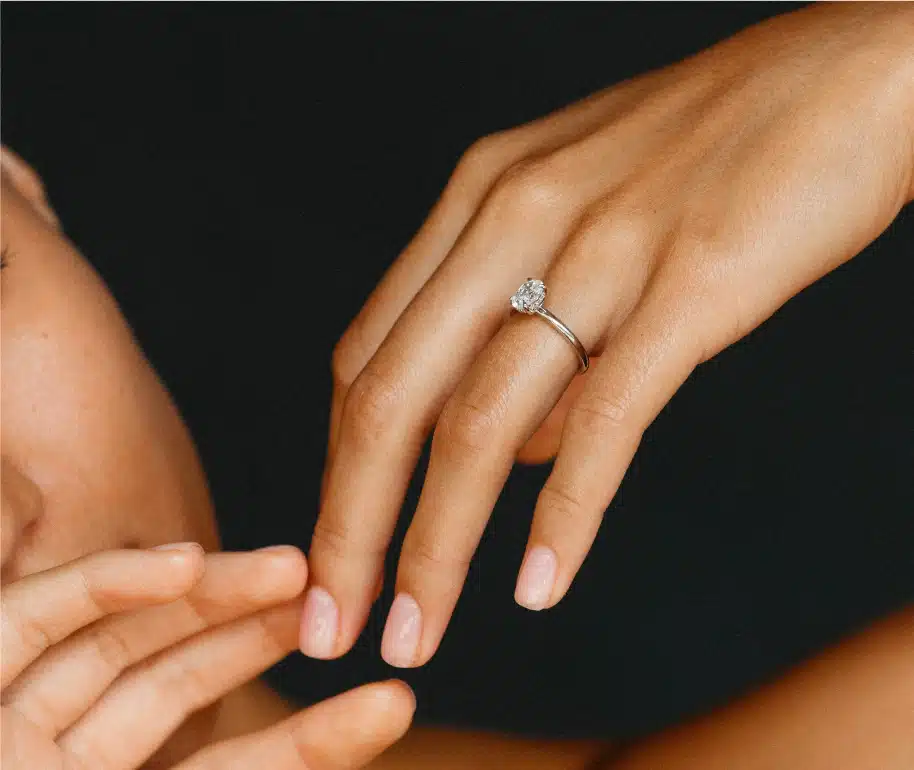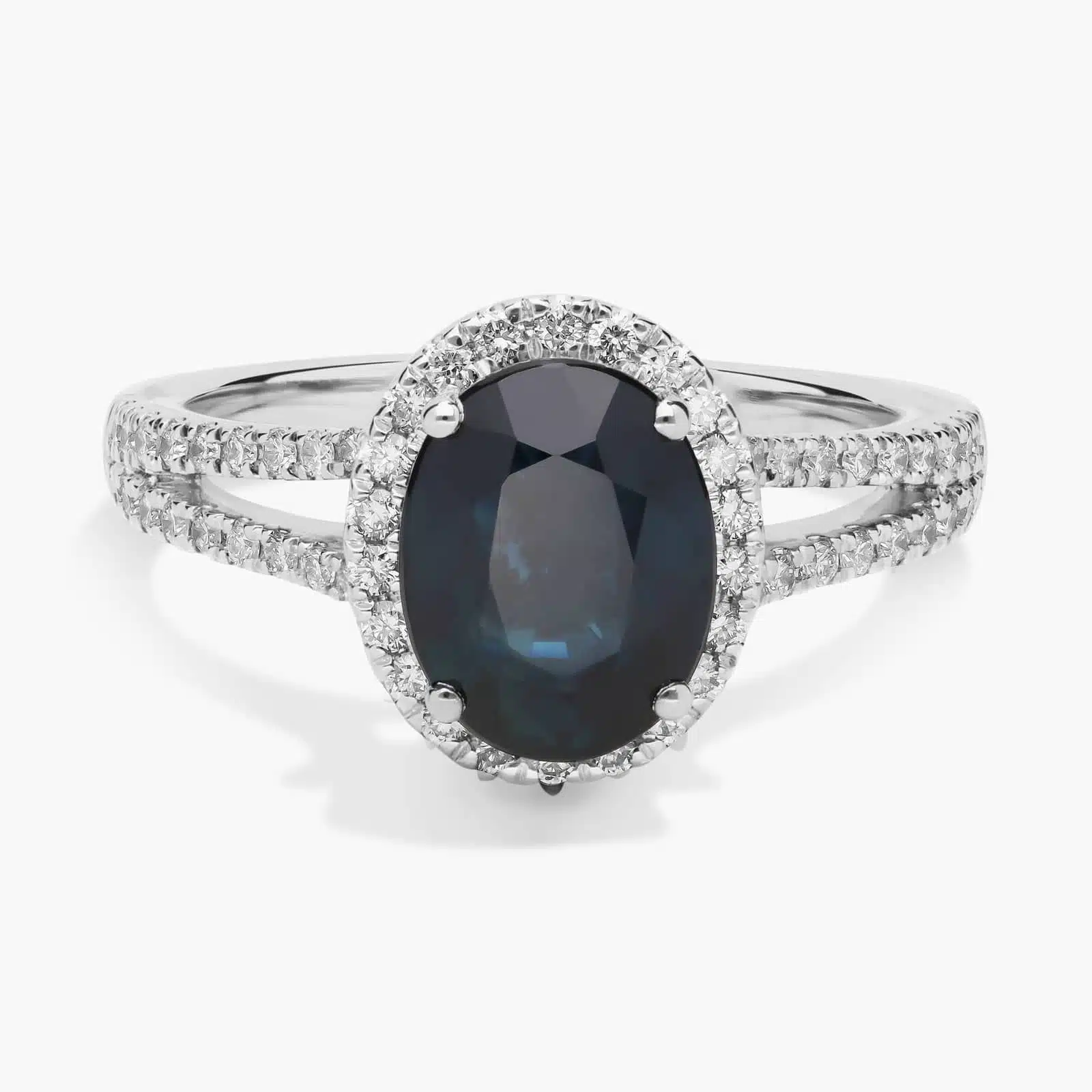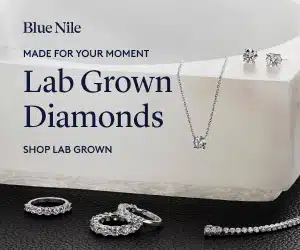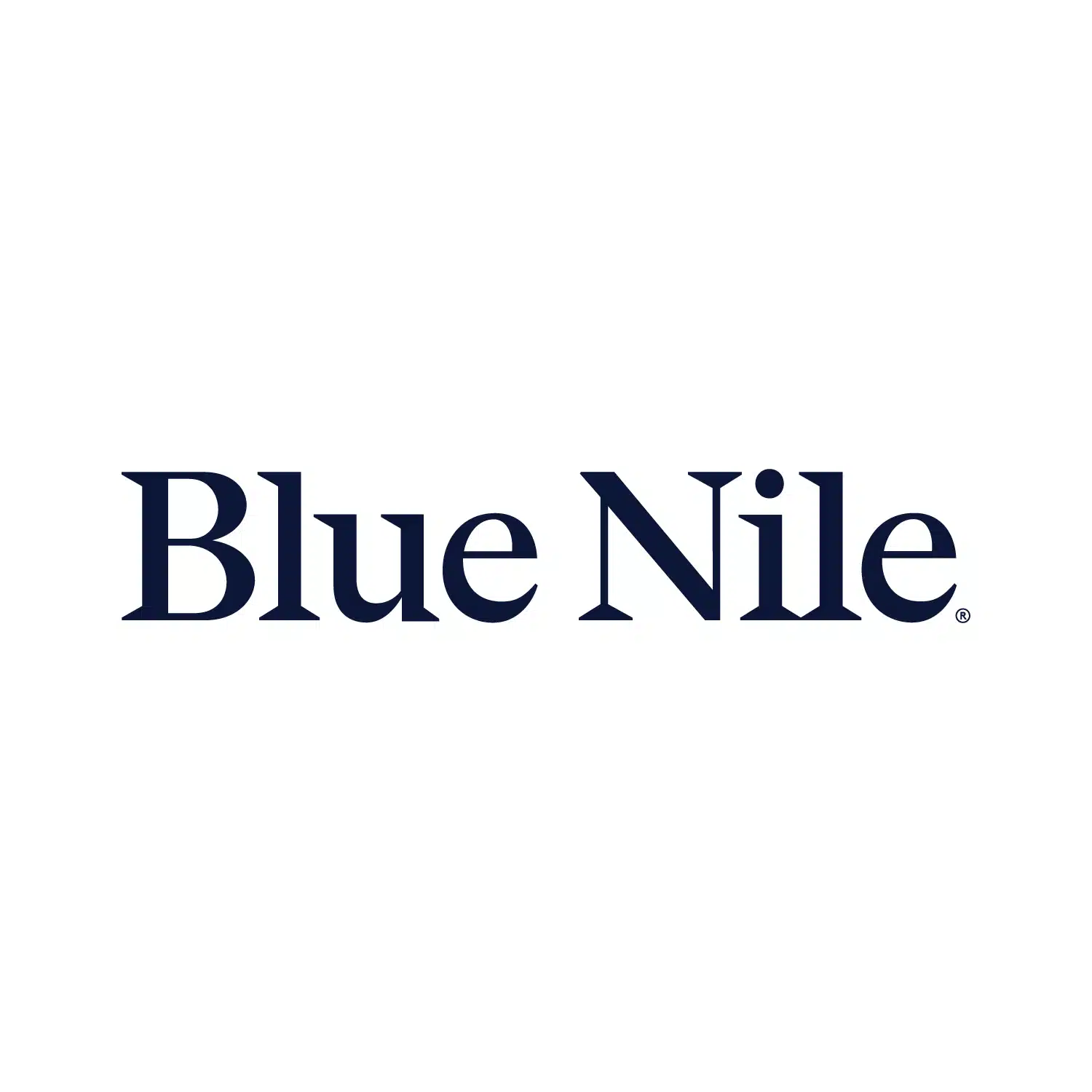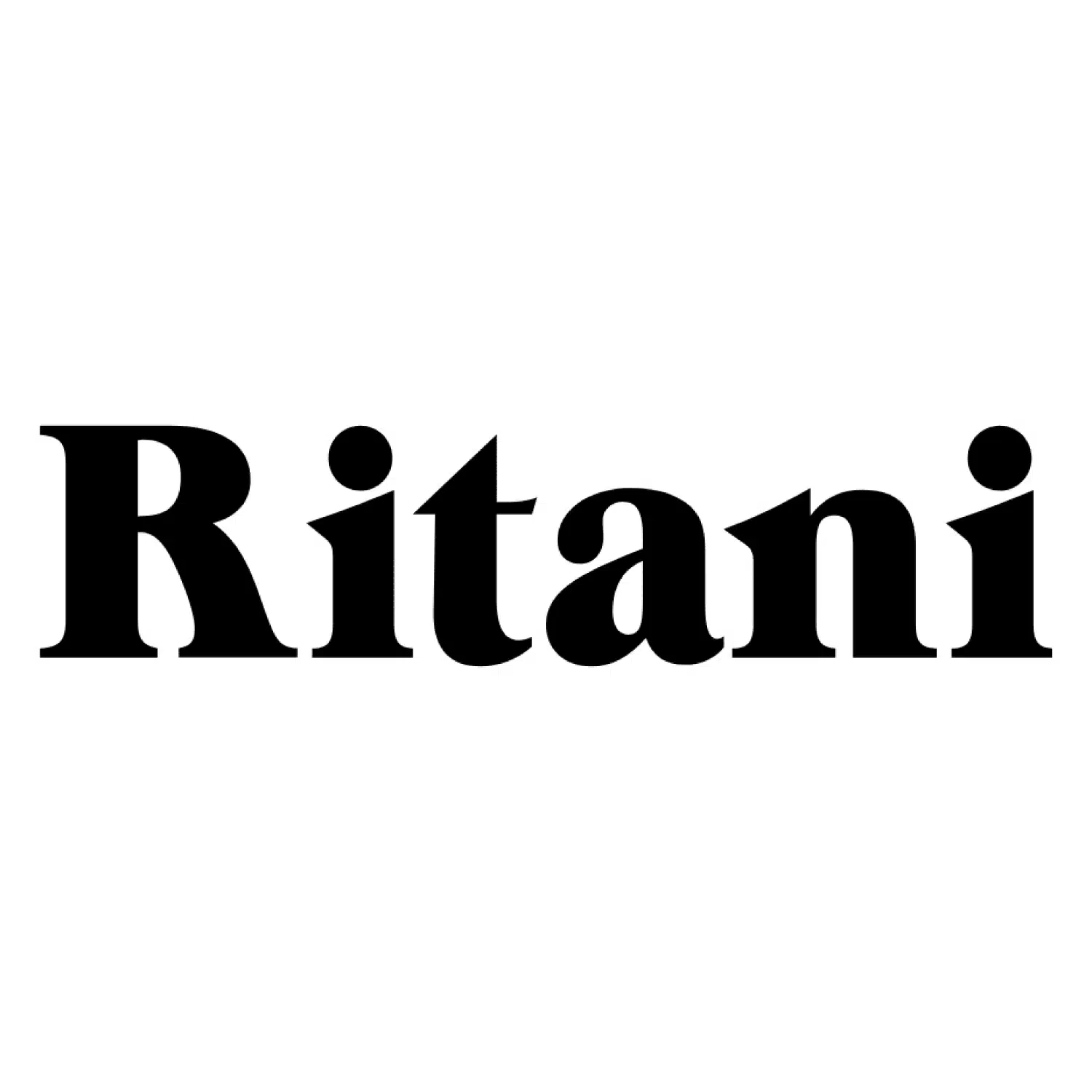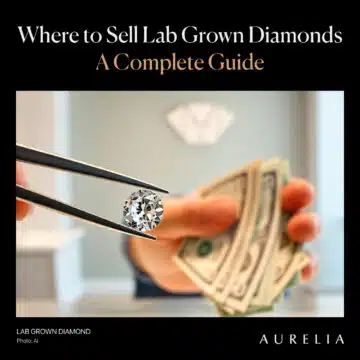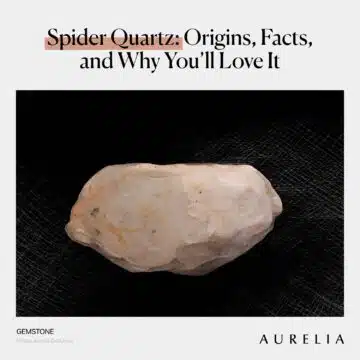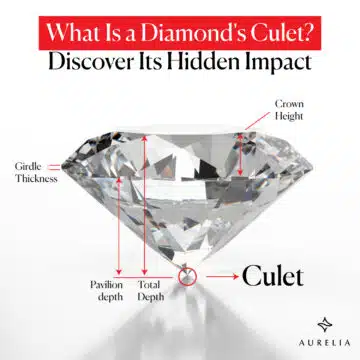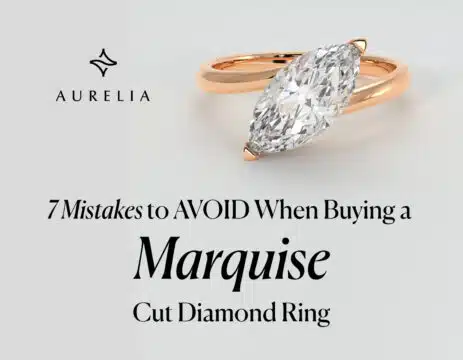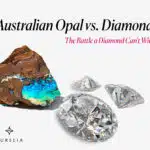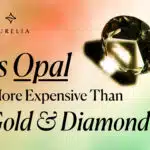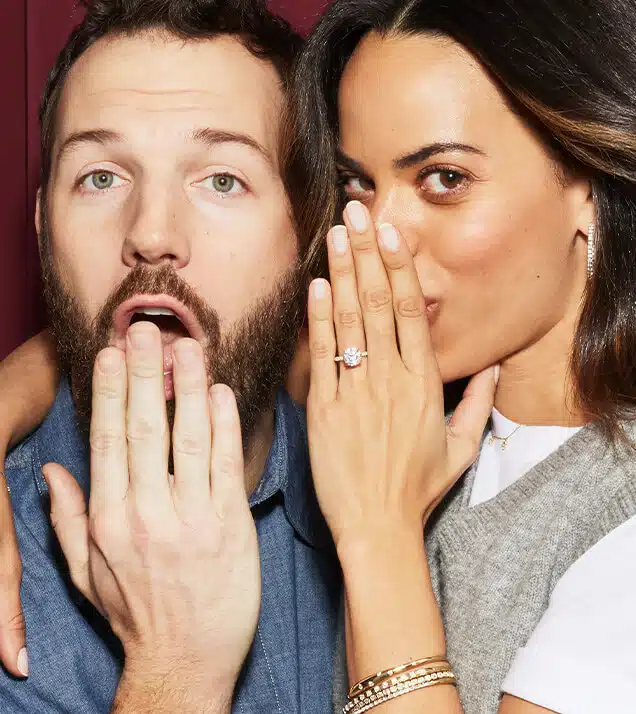I’m Mehedi Hasan, your diamond expert from Aurelia, and I’m thrilled to share the magic of H color diamonds with you! They’re part of the GIA color scale of Diamonds, which runs from D to Z—D being the whitest, Z showing more yellow.
H color diamonds sit in the near-colorless range, G to J, with just a faint yellow tint you’d need a magnifying glass to spot. They’re a savvy choice, offering a white, icy look without the high cost of colorless D color diamonds, E color diamonds, or F color diamonds.
Why should you care about H color diamonds? They’re a top pick for engagement rings, balancing quality and affordability perfectly.
You get a sparkly, white diamond without spending a fortune. It’s a luxury look on a budget—smart, right?
Here’s what we’ll explore to help you choose:
- How H color diamonds look in real life—spoiler, they’re gorgeous!
- Pricing, best settings, comparisons, and tips to pick the perfect one.
Ready to dive in? Let’s find your dream H color diamond!
- What Is an H Color Diamond?
- Visual Appearance of H Color Diamonds
- Pricing of H Color Diamonds
- When to Choose an H Color Diamond
- When Not to Choose an H Color Diamond
- Diamond Cuts and H Color
- Lighting Conditions and H Color Diamonds
- Fluorescence in H Color Diamonds
- Selecting the Best H Color Diamond
- Resale Value and Long-Term Retention
- Color Variations Within H Grade
- H Color Diamonds in Settings
- Lab-Grown vs. Natural H Color Diamonds
- FAQs: Your Burning Questions About H Color Diamonds Answered
- Conclusion
What Is an H Color Diamond?

Let’s start with the basics of how diamonds get their color grade—it’s fascinating! The Gemological Institute of America (GIA), the gold standard in diamond grading, created a scale that runs from D to Z to measure a diamond’s color.
D is the whitest, completely colorless, while Z has a noticeable yellow or brown tint. This scale helps us understand how much color a diamond shows, and it’s been the industry benchmark since the GIA introduced it in the 1950s.
H color diamonds are the 5th grade on this scale, landing right in the near-colorless range, which includes G, H, I, and J. That means H isn’t as pure as D, E, or F, but it’s still incredibly close to colorless—making it a fantastic choice for anyone who wants beauty without the high cost.
What Does “Near-Colorless” Mean for H Color?
So, what exactly does “near-colorless” mean when we talk about H color diamonds? It’s simple: an H color diamond has a faint yellow tint, but you’d only notice it under magnification or in very specific lighting—like a jeweler’s bright spotlight.
To the naked eye, H looks white and sparkly, almost like a colorless diamond. The GIA grades H as near-colorless because that tiny tint is so subtle, it doesn’t take away from the diamond’s brilliance in everyday settings—like on your finger during a dinner date or in sunlight.
How H Color Compares to Other Grades
Let’s see how H stacks up against other color grades on the GIA scale—it’s easier than you think! D, E, and F are the colorless grades, meaning they have no visible tint at all; they’re like pure ice, but they come with a higher price tag.
G, which is just one step above H, is a bit whiter—check out my detailed guide on G color diamonds to see the difference. Meanwhile, I and J grades, below H, show a bit more yellow tint, especially in larger stones or certain cuts, making H a great middle ground.
Fun Fact About H Color Diamonds
Here’s something cool to know: H color diamonds are among the top two most popular near-colorless grades, according to StoneAlgo data!
Why? They look white and stunning without the hefty price tag of D, E, or F—perfect for budget-savvy buyers who still want that wow factor.
Diamond IQ Test: Natural or Lab-Grown?
Two identical diamonds: GIA Certified, 1.51ct, D Color, VVS1, Ideal Cut. One is natural ($16,530), the other is lab-grown ($2,390). Choose the diamond you like better and see if you can match it to its origin.
Visual Appearance of H Color Diamonds
Let’s talk about what you’ll actually see when you look at an H color diamond—it’s pretty impressive! To your naked eye, an H color diamond looks clear and white, with just a faint yellow tint that’s only visible under specific conditions, like magnification or when you place it side-by-side with a D color.
Think of it like a glass of pure water with a single drop of lemon—barely noticeable, right? In everyday settings—like on your finger at a party or in natural daylight—an H color diamond sparkles with a crisp, icy glow that feels luxurious.
Comparison with Other Grades
So, how does H stack up against other color grades? Let’s break it down. D, E, and F are purely colorless, like the iciest snow you’ve ever seen—they’re stunning but pricier, often costing $6,500-$7,000 for a 1-carat, VS1, excellent cut at Blue Nile.
Best Deal Of The Year – Final Days
Blue Nile’s “Clear The Vault” is ON.
Shop Fine Jewelry Upto 70% OFF.
*Exclusions may apply. See Blue Nile for complete details.
G is just a step whiter than H, but the difference is so tiny most people can’t tell—G might run $4,000-$5,500 for the same specs. I and J, on the other hand, show a more noticeable yellow tint, especially in larger stones like a 2-carat, where I might cost $6,000-$7,000 at James Allen but look warmer than an H at $8,000-$9,000.
DIAMOND ON SALE!!
⏰ Tick-Tock! The Best Diamond Deals at James Allen Are Disappearing Fast!
Impact of Cut on Color Visibility
The cut of your H color diamond can change how that faint tint shows up—it’s all about how light plays inside the stone. A round brilliant cut, with its 58 facets, scatters light like a pro, hiding the yellow tint best and making your H look whiter.
For example, a 1-carat H color, VS1, round brilliant from James Allen at $4,200 looks whiter than a 1-carat H color, VS1, emerald cut of the same grade at $3,900 from Ritani—the emerald’s larger, step-like facets show more of that tint. An Asscher cut H, like a 1-carat, VS2 for $4,000 at Vrai, falls in between, showing a bit more color than a round but less than an emerald.
James Allen is a top leader in online diamond sales, offering cutting-edge imaging technology that lets you inspect diamonds as if you were using a jeweler's loupe. With the largest exclusive selection of loose diamonds available online and excellent pricing, they also boast one of the finest collections of lab-created diamonds on the market. They currently run a 25% discount on selected lab-grown diamonds!
WHAT WE LOVE ABOUT THEM:
- 30-day no-questions-asked return policy, with a prepaid shipping label provided by James Allen.
- Lifetime warranty on all purchases.
- Free international shipping.
- Complimentary prong tightening, repolishing, rhodium plating, and cleaning every six months.
- Insurance appraisals included with purchases.
- One free resizing within 60 days of purchase.
- Free ring inscriptions available.
- Best-in-class high-quality imagery for every diamond in stock.
- 24/7 customer support.
- Premium, best-in-class packaging.
Want to explore more shapes? My diamond cut chart shows how each cut impacts the look. The right cut can make your H color diamond shine like a higher grade—pretty clever, huh?
Pricing of H Color Diamonds
Let’s dive into the world of H color diamond pricing and break it down so you can understand exactly what you’re paying for—and why H color diamonds are such a fantastic choice! Whether you’re shopping for an engagement ring or a special piece of jewelry, knowing the cost of an H color diamond and how it compares to other grades will help you make a smart, informed decision.
I’ll walk you through the average price range for a 1-carat H color diamond, compare it to other color grades, and give you a detailed table to make it all crystal clear. Ready? Let’s get started!
Average Price Range for 1-Carat H Color Diamonds
So, how much will a 1-carat H color diamond set you back? Based on the latest trends from top online retailers like Blue Nile and James Allen as of March 2025, you’re looking at a price range of $3,500 to $4,500 for a 1-carat H color diamond with VS1 clarity and an excellent cut. Let’s unpack what that means for you.
DIAMOND ON SALE!!
⏰ Tick-Tock! The Best Diamond Deals at James Allen Are Disappearing Fast!
The $3,500-$4,500 range reflects a diamond that’s eye-clean (no visible flaws to the naked eye) thanks to the VS1 clarity, and it sparkles brilliantly because of the excellent cut. The H color grade, as we discussed earlier, is near-colorless, meaning it looks white and stunning in most settings, with only a faint yellow tint under magnification.
This price can vary slightly depending on other factors like fluorescence, the specific retailer, and even the diamond’s cut proportions—but this range gives you a solid benchmark.
For example, I found a 1-carat H color, VS1 clarity, excellent cut round diamond on James Allen for $4,200, while a similar one on Blue Nile was priced at $4,350. These prices align with the range and show how H color diamonds offer a gorgeous look without the premium of higher color grades.
Lifetime Protection Alert!
A James Allen purchase includes a free lifetime warranty. This covers free prong tightening, polishing, and cleaning for life, ensuring your jewelry always looks its best.
If you’re on the lower end of the budget, you might find one closer to $3,500 with slight fluorescence (which can lower the price but might make it look whiter), while a top-tier H with no fluorescence and perfect proportions could hit $4,500.
Why does this range make H color diamonds so appealing? You’re getting a diamond that looks nearly as white as the pricier colorless grades but at a fraction of the cost. That means more money in your pocket for a bigger carat size, a fancier setting, or even a romantic proposal dinner—your call!
Cost Comparison with Other Grades
Now, let’s see how H color diamonds stack up against other color grades on the GIA scale. This comparison will show you why H is often the “sweet spot” for value and beauty.
We’ll look at the colorless grades (D-F), the grade just above H (G), and the grades just below (I-J). I’ll also include some real-world price examples to make it super clear.
- D-F (Colorless Grades): These are the top of the GIA color scale—purely colorless, like a drop of the clearest water. But that icy perfection comes at a cost. A 1-carat D color, VS1 clarity, excellent cut diamond typically ranges from $6,500 to $7,000.
For example, a 1-carat D color, VS1, excellent cut round diamond on Blue Nile might be $6,800, while an F color of the same specs could be $6,500. Compared to an H at $3,500-$4,500, D-F grades are 20-33% more expensive. That’s a difference of $2,000-$3,000 for a color difference most people can’t even see in everyday lighting! - G (Near-Colorless, One Step Above H): G color diamonds are also near-colorless, just a tiny bit whiter than H. The price for a 1-carat G color, VS1 clarity, excellent cut diamond usually falls between $4,000 and $5,500. For instance, a 1-carat G color, VS1, excellent cut round diamond on James Allen might cost $4,800.
That makes G about 10-15% more expensive than H, or roughly $500-$1,000 more. The difference in whiteness between G and H is so subtle that, unless you’re a gemologist with a loupe, you’re unlikely to notice it—especially once the diamond is set in a ring. - I-J (Near-Colorless, Below H): I and J color diamonds sit just below H on the GIA scale, showing a bit more yellow tint, especially in larger stones or certain cuts. A 1-carat I color, VS1 clarity, excellent cut diamond typically costs $3,000-$4,000, while a J color might drop to $2,500-$3,500.
For example, a 1-carat I color, VS1, excellent cut round diamond on Blue Nile could be $3,600, and a J color of the same specs might be $3,200. That makes I-J grades 10-20% cheaper than H, saving you $500-$1,000.
While I and J can still look white in smaller sizes or yellow gold settings, the tint becomes more noticeable in larger stones or white gold/platinum settings compared to an H.
Blue Nile is one of the biggest and most recognized online jewelry retailers, offering an extensive and exclusive inventory. Their high-resolution images are improving and getting closer to the quality offered by James Allen, while their prices remain highly competitive. Right now, Blue Nile offers up to 30% savings on jewelry during a limited-time sale.
WHAT WE LOVE ABOUT THEM:
- 30-day no-questions-asked return policy, with a prepaid shipping label provided by Blue Nile.
- Lifetime warranty on all purchases.
- Free shipping on every order.
- Complimentary services every six months, including prong tightening, repolishing, rhodium plating, and cleaning.
- Insurance appraisal included with your purchase.
- One free resizing within the first year.
- High-quality images available for roughly half of their diamond selection.
- 24/7 customer service support.
- Full credit toward future upgrades, as long as the new item is at least double the value.
- Best-in-class order fulfillment process.
What does this mean for you? Choosing an H color diamond saves you a significant amount compared to D, E, F, or even G, while still giving you a near-colorless look. And compared to I or J, H offers a whiter appearance for just a small price bump—perfect if you want that extra bit of brightness without breaking the bank.
Detailed Pricing Table
To make this even easier for you, here’s a detailed pricing table that sums up the costs, savings, and where to shop for each color grade. This table focuses on 1-carat diamonds with VS1 clarity and an excellent cut, so you’re comparing apples to apples.
| Color Grade | Group | Average Price (1 Carat, VS1, Excellent Cut) | Savings Compared to D | Where to Check |
|---|---|---|---|---|
| D | Colorless | $6,500 – $7,000 | – | Blue Nile, James Allen |
| G | Near-Colorless | $4,000 – $5,500 | 15-25% ($1,000-$1,500) | Blue Nile, James Allen |
| H | Near-Colorless | $3,500 – $4,500 | 30-40% ($1,500-$2,000) | Blue Nile, James Allen |
| I | Near-Colorless | $3,000 – $4,000 | 40-50% ($2,000-$2,500) | Blue Nile, James Allen |
| J | Near-Colorless | $2,500 – $3,500 | 50-60% ($2,500-$3,000) | Blue Nile, James Allen |
Let’s break down what this table tells you. If you go for a D color diamond, you’re paying top dollar—$6,500-$7,000—for a completely colorless stone. But with an H color diamond at $3,500-$4,500, you’re saving 30-40%, or $1,500-$2,000, compared to a D.
That’s a huge chunk of change! A G color, at $4,000-$5,500, saves you 15-25% over a D, but it’s still $500-$1,000 more than an H. On the flip side, I and J colors are even more budget-friendly, saving you 40-50% and 50-60% compared to a D, but they might not look as white as an H in certain settings.
Where should you shop? Both Blue Nile and James Allen are fantastic options. They offer 360° HD videos, detailed specs, and GIA certifications, so you know exactly what you’re getting. Plus, they often have sales—like Blue Nile’s current 30% off on engagement ring settings—that can help you save even more.
James Allen: Our 5-Star Choice for Price and Selection
Check our comprehensive James Allen Review to learn more about their pricing and commitment.
Why This Matters for You
Understanding the pricing of H color diamonds helps you see the incredible value they offer. For $3,500-$4,500, you’re getting a 1-carat diamond that looks white, sparkles brilliantly, and saves you thousands compared to colorless grades like D, E, or F.
Even compared to a G, you’re saving enough to maybe upgrade to a slightly larger stone or a fancier setting—like a halo or pavé design.
If you’re wondering whether to go for an I or J to save more, it depends on your setting and preferences. In a yellow gold ring, an I or J might look just as white as an H, saving you $500-$1,000. But in a white gold or platinum setting, or if you’re getting a larger stone (like 2 carats), the H will look noticeably whiter and brighter.
Want to explore more about diamond pricing and the 4 Cs? Check out my diamond color and clarity chart for a deeper dive. H color diamonds give you the best of both worlds—stunning beauty and smart savings.
When to Choose an H Color Diamond
Looking to get a gorgeous diamond without spending a fortune? H color diamonds are your go-to—they offer a white, sparkly look at a lower cost, perfect if you want quality without overspending.
A 1-carat H color, VS1, excellent cut diamond costs $3,500-$4,500, saving you $1,500-$2,000 compared to a D color at $6,500-$7,000. That’s a big win for your budget while still getting a near-colorless beauty!
Ideal for Specific Settings
H color diamonds shine in certain settings that make them look even whiter. Here’s where they work best:
- Halo Settings: They match perfectly with F-G side stones, creating a seamless, bright look. A 1-carat H color halo ring from Blue Nile at $4,200 blends beautifully with its F-G halo.
- Yellow Gold Settings: The warm metal masks H’s faint tint, making it look whiter. A 1-carat H in yellow gold from James Allen for $4,300 looks as white as a G.
H color diamonds are perfect for real-life moments where you want beauty and value. If you’re traveling and need a stunning yet affordable ring, H fits the bill—check my guide on less expensive engagement rings for traveling.
They’re also great for first-time buyers or if you’re saving for a big wedding. H gives you that white sparkle without the high price—smart and stylish, right?
Ritani is a trusted name in the online jewelry industry, known for its stunning collection of ethically sourced diamonds and gemstones. With a focus on transparency, Ritani offers customers in-depth diamond education and innovative features like in-store preview options, ensuring a seamless and informed shopping experience.
WHAT WE LOVE ABOUT THEM:
- Free in-store preview of loose diamonds before purchase.
- 30-day free returns, including resizing services for all rings.
- Lifetime warranty that covers prong tightening, polishing, rhodium plating, and more.
- Free insured shipping on all orders.
- Access to a wide selection of GIA-certified diamonds and lab-grown options.
- High-resolution 360° videos of diamonds for accurate evaluation.
- Ethical sourcing and conflict-free diamonds.
- Buy Now, Pay Later financing options available.
- 24/7 customer service with personalized consultations.
When Not to Choose an H Color Diamond
H color diamonds are stunning, but they’re not the best pick if you’re after the absolute whitest diamond possible. For that, you’ll want to go for D, E, or F grades—these are the colorless champs on the GIA scale, showing no hint of yellow even under magnification.
An H color has a faint yellow tint that’s invisible to the naked eye in most settings, but if you’re a perfectionist or comparing it side-by-side with a D under a jeweler’s loupe, you might notice the difference.
A 1-carat D color, VS1, excellent cut from Blue Nile at $6,800 will look icier than an H at $4,200—so if pure whiteness is your goal, aim higher.
Read Our 5-Star Blue Nile Review
Check our comprehensive Blue Nile review to learn why we rated Blue Nile 5 stars for their exceptional quality and value.
If I or J Offers Similar Looks for Less
Sometimes, you might not need an H color diamond if I or J grades can give you a similar look for less money. I and J are just below H on the GIA scale, with a bit more yellow tint, but the difference is often barely noticeable—especially in smaller stones or yellow gold settings.
For example, a 1-carat I color, VS1, excellent cut at $3,200 from James Allen might look just as white as an H at $4,200 in a yellow gold ring—the warm metal hides the tint. You’re saving $1,000 without sacrificing much in appearance, making I or J a smart pick if budget is your priority.
Diamond Cuts and H Color
The cut of your H color diamond can make that faint yellow tint disappear—or stand out more—depending on the shape. Let’s break it down so you know which cuts work best for H.
- Round Brilliant: This cut is the best at hiding tint, thanks to its 58 facets that scatter light like a disco ball. It makes the H color look whiter and brighter.
- Emerald/Asscher: These step-cut shapes show more color because their larger, flat facets act like windows, revealing the faint yellow tint more clearly.
- Princess: A princess cut is moderate—it sparkles a lot but can reveal some tint in larger stones since its facets don’t disperse light as much as a round brilliant.
Let’s look at some real examples to see how H color diamonds perform in different cuts—prices included for clarity.
- Round Brilliant H Color: A 1-carat H color, VS1, excellent cut round brilliant from Ritani at $4,000 looks white and sparkly, with the tint practically invisible due to the light dispersion.
- Emerald Cut H Color: A 1-carat H color, VS1, emerald cut from Ritani at $3,800 shows the faint yellow more visibly—those step facets don’t hide much, but it’s still elegant.
- Princess Cut H Color: A 1-carat H color, VS1, princess cut from Ritani at $3,900 offers a balanced look—lots of sparkle, but the tint might peek through in a 2-carat size.
Lighting Conditions and H Color Diamonds
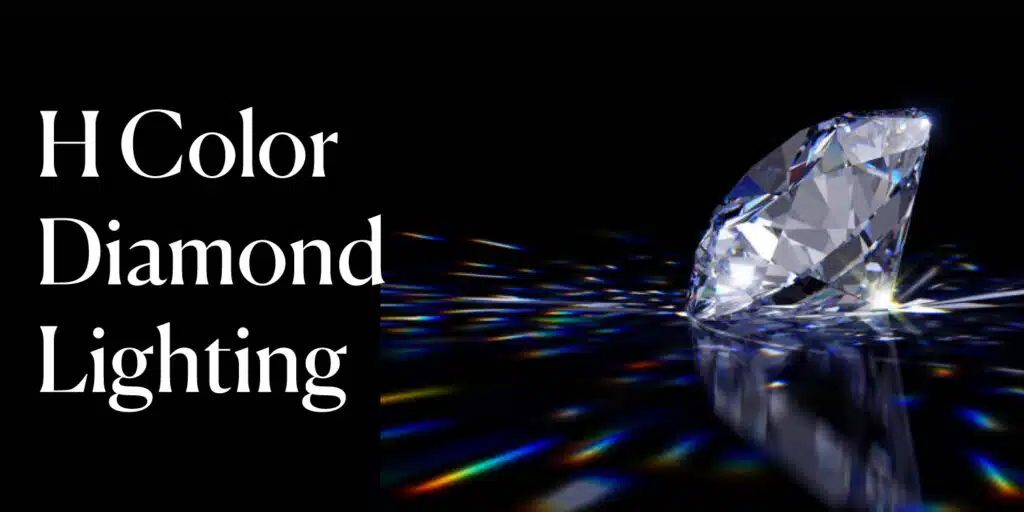
Lighting can totally change how your H color diamond looks, and it’s something you’ll want to understand before buying. In bright store lights—like those intense white ones jewelers use—the faint yellow tint in an H color diamond might show up a bit more.
Natural daylight, like on a sunny day, makes H look slightly warmer but still white and beautiful. Under home lamps, such as a soft LED or warm bulb, it appears crisp and colorless—perfect for cozy evenings.
This shift happens because H is near-colorless, so light plays a big role in how that tint shows up. Curious about how size impacts this? Check my diamond carat size chart to see how larger H color stones might look in different lights.
Read Our 5-Star Blue Nile Review
Check our comprehensive Blue Nile review to learn why we rated Blue Nile 5 stars for their exceptional quality and value.
Tips for Evaluation
You don’t want surprises, so test your H color diamond under different lights before buying—it’s a game-changer! Try it in sunlight, LED, and incandescent lighting to see how it performs in real life.
A great place to do this is Vrai—they offer realistic views in various conditions, online or in-store. For more on how light ties into the 4 Cs, my diamond grading chart for the 4 Cs has all the details. Testing ensures your H color diamond shines everywhere you go!
Fluorescence in H Color Diamonds
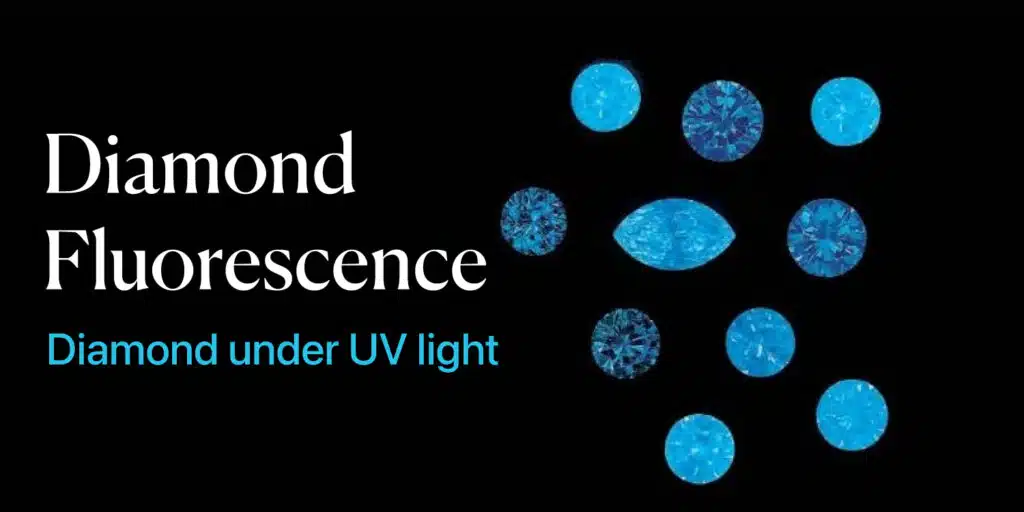
Fluorescence might sound technical, but it’s pretty cool—some diamonds glow blue under UV light, like sunlight or blacklights, because of nitrogen inside them. The GIA says about 30% of diamonds have this trait, and it can affect how your H color diamond looks.
It’s a natural quirk from how the diamond formed millions of years ago. Want to know if your diamond might have it? My guide on GIA-certified synthetic diamonds explains how certification spots fluorescence.
Impact on H Color
Fluorescence can be a friend or foe for H color diamonds—it depends on the strength. Medium fluorescence can be beneficial, making your H look whiter by masking that faint yellow tint, especially in sunlight.
But strong fluorescence might be detrimental, causing haziness that reduces sparkle and makes the diamond look cloudy. It’s rare—less than 1% of diamonds get hazy—but it’s something to watch for.
How to Check
You can check fluorescence easily with the right tools—don’t skip this step! Look at James Allen’s 360° videos to see if fluorescence affects clarity; avoid strong fluorescence if the diamond looks cloudy.
If you’re shopping during a sale, you might snag an H color diamond with faint fluorescence for less—check my post on do diamond rings go on sale for tips. A little glow can make your H color diamond even brighter, but clarity is key!
DIAMOND ON SALE!!
⏰ Tick-Tock! The Best Diamond Deals at James Allen Are Disappearing Fast!
Selecting the Best H Color Diamond
Picking the perfect H color diamond is all about focusing on three key factors—clarity, cut, and carat weight—to ensure you get a stunning stone. Let’s break it down so you know exactly what to look for.
- Clarity : Aim for VS1 or VS2 clarity for eye-clean beauty—that means no visible flaws to the naked eye. A VS1 H color diamond, like a 1-carat at $4,200 from Blue Nile, looks flawless without a loupe, letting that near-colorless sparkle shine.
- Cut : Go for an excellent or ideal cut to maximize sparkle and hide the faint yellow tint. An excellent cut round brilliant H color diamond reflects light like a mirror, making it look whiter and brighter.
- Carat : A 1-carat H color diamond is super popular for engagement rings, costing $3,500-$4,500. For variety, a 0.5-carat is $2,000-$3,000, while a 2-carat jumps to $8,000-$10,000—check my guide on what shape diamond looks the largest to see how carat impacts size perception.
Tips for Buying
You want an H color diamond that’s a total stunner—here’s how to make sure you’re getting the best one. Follow these steps to shop with confidence.
- Always Get a GIA Report: The GIA is the gold standard, and their report ensures quality. They say, “A GIA Diamond Grading Report provides a comprehensive evaluation of a diamond’s quality, ensuring you know exactly what you’re getting.”
- Look for No Obvious Inclusions: Even in VS1 or VS2, inclusions should be tiny—nothing dark or in the center that dulls the sparkle. Check Blue Nile’s detailed specs and 360° videos to spot any flaws.
- Verify Authenticity: Want to ensure your diamond is real? My guide on how to tell if a diamond is real has easy tips to confirm you’re getting the real deal.
Best Deal Of The Year – Final Days
Blue Nile’s “Clear The Vault” is ON.
Shop Fine Jewelry Upto 70% OFF.
*Exclusions may apply. See Blue Nile for complete details.
Resale Value and Long-Term Retention
Wondering how an H color diamond holds up over time? H color diamonds retain decent value, but they don’t fetch as much as D, E, or F grades on the resale market.
A 1-carat H color, VS1, excellent cut might resell for $2,500-$3,500, while a D color of the same specs could go for $4,500-$5,500—that’s a 20-30% higher resale value for D. H still holds its own, especially since it’s a popular choice for engagement rings, but colorless grades often appeal more to collectors.
Factors Affecting Resale
What impacts how much you’ll get when you resell your H color diamond? Two big factors: cut quality and market demand.
- Cut Quality: An excellent cut makes your H color diamond sparkle more, which boosts its resale value. A poorly cut stone, even a higher color grade, will sell for less because it looks dull.
- Market Demand: H color is popular now for its value, but trends can shift—sometimes buyers crave D-F for luxury. Check Ritani to see current demand and how H is moving.
Want to learn more about how cut affects value? My diamond cut chart breaks it down. H color diamonds are a solid long-term choice if you pick the right cut and keep an eye on trends!
Color Variations Within H Grade
Did you know that not all H color diamonds look exactly the same? Even within the H grade on the GIA scale, there’s a range—some H diamonds lean toward G, looking whiter, while others nudge closer to I, appearing a bit warmer.
This happens because of natural variations in how diamonds form deep in the Earth—pretty fascinating, right? If you’re curious about diamond origins, check my post on at what depth is diamond found to learn more about their journey.
How to Pick the Best
You want the whitest H color diamond possible—here’s how to find it. Follow these steps to ensure you get a stone that shines bright.
- Check GIA Reports for Pure H Grading: The GIA report will confirm it’s a true H, not leaning too close to I with extra warmth. It’ll also note any unwanted tints like brown or gray—stick to a pure H for the best look.
- Look for Minimal Tint at Vrai: At Vrai, you can compare H color diamonds online or in-store—pick one that looks whiter, closer to G, for maximum brightness.
Dive deeper into how color fits with other traits in my diamond grading chart for the 4 Cs. A whiter H will make your ring pop—let’s find that perfect one!
James Allen: Our 5-Star Choice for Price and Selection
Check our comprehensive James Allen Review to learn more about their pricing and commitment.
H Color Diamonds in Settings
The right setting can make your H color diamond look even whiter—let’s explore the best options. Here’s where H truly shines.
- Yellow Gold: The warm tone of yellow gold masks H’s faint yellow tint, enhancing its whiteness. A 1-carat H color in a yellow gold setting from James Allen at $4,200 looks as white as a higher grade.
- White Gold/Platinum: These metals give an icier look, but the faint tint might be more noticeable in bright light—still stunning, though! A 1-carat H in white gold at $4,300 from Blue Nile sparkles beautifully.
- Halo Settings: H pairs perfectly with F-G side stones in a halo, creating a seamless, bright effect. A halo ring with an H center stone from Ritani at $4,500 looks cohesive and dazzling.
Want to ensure your diamond is ethically sourced? See my post on why we refer to some diamonds as conflict materials for more on ethical choices.
Settings to Avoid
Some settings can highlight H’s yellow tint if you’re sensitive to it—so let’s steer clear of those. Avoid cushion or princess cuts with H color diamonds if you don’t want to notice the tint.
These cuts have larger facets that don’t hide color as well as a round brilliant, making the yellow more visible, especially in larger stones. Explore better options in my guide on the benefits of a low-set engagement ring—it’ll help your H color diamond look its best.
Worried about durability in your setting? Check my post on what things are strong enough to break diamonds to keep your H color diamond safe. The right setting makes all the difference—let’s make your H shine!
Lab-Grown vs. Natural H Color Diamonds
Let’s explore the key differences between lab-grown and natural H color diamonds—it’s a choice that can impact your wallet, ethics, and peace of mind. Both types of H color diamonds look identical to the naked eye, sharing the same near-colorless beauty with a faint yellow tint that’s only visible under magnification.
The difference lies in their origin: natural H color diamonds are mined from the Earth, formed over billions of years under intense heat and pressure, while lab-grown H color diamonds are created in controlled environments using advanced technology that mimics those natural conditions.
Lab-grown diamonds are made using methods like High Pressure High Temperature (HPHT) or Chemical Vapor Deposition (CVD), producing stones with the same physical, chemical, and optical properties as natural diamonds.
The GIA grades them the same way, so an H color lab-grown diamond has the same near-colorless sparkle as a natural one. However, lab-grown H color diamonds are typically 20-30% cheaper than their natural counterparts, making them a budget-friendly option without sacrificing quality.
Curious about the tech behind lab-grown gems? My guide on types of lab-grown diamonds dives into the fascinating process.
Pricing Example: Lab-Grown vs. Natural H Color Diamonds
Let’s look at the numbers to see how much you can save with a lab-grown H color diamond—it’s a game-changer! A natural 1-carat H color diamond with VS1 clarity and an excellent cut typically costs between $3,500 and $4,500, based on current prices at retailers like Blue Nile and James Allen.
Best Deal Of The Year – Final Days
Blue Nile’s “Clear The Vault” is ON.
Shop Fine Jewelry Upto 70% OFF.
*Exclusions may apply. See Blue Nile for complete details.
In contrast, a lab-grown 1-carat H color diamond with the same VS1 clarity and excellent cut ranges from $2,500 to $3,500. For example, a lab-grown 1-carat H, VS1, excellent cut round diamond at Vrai might be $2,800, while a natural one of the same specs at James Allen could be $4,200—that’s a savings of $1,400, or about 33%!
This price difference comes from the lower production costs of lab-grown diamonds, which don’t involve mining or the same supply chain expenses. Want to know more about diamond pricing? My post on how much money is a small diamond with no fingerprints offers more insights.
Why Choose Lab-Grown H Color Diamonds?
So, why should you consider a lab-grown H color diamond? There are three big reasons that make them a fantastic choice for many buyers.
- Ethical Sourcing: Lab-grown diamonds are conflict-free, meaning no mining-related ethical concerns like environmental damage or labor issues. If this matters to you, lab-grown is the way to go—learn more in my post on why we refer to some diamonds as conflict materials.
- Budget-Friendly: That 20-30% savings means you can get a larger or higher-quality H color diamond for the same price as a smaller natural one. More sparkle for your money—yes, please!
- Same Quality: Lab-grown H color diamonds are identical in appearance and durability to natural ones, graded by the GIA with the same standards. Check out Vrai for stunning lab-grown options that look just as beautiful.
FAQs: Your Burning Questions About H Color Diamonds Answered
Conclusion
Let’s wrap up with the big points—H color diamonds are near-colorless, budget-friendly gems that look white and stunning, making them perfect for engagement rings. They offer that icy beauty without the premium price of D-F grades, saving you $1,500-$2,000 on a 1-carat stone while still sparkling like a dream.
You’ve got everything you need to make an informed choice with this guide—now it’s time to find your H color diamond! Need a little help? Reach out to me at hello@moissanitebyaurelia.com. I’d love to assist.

